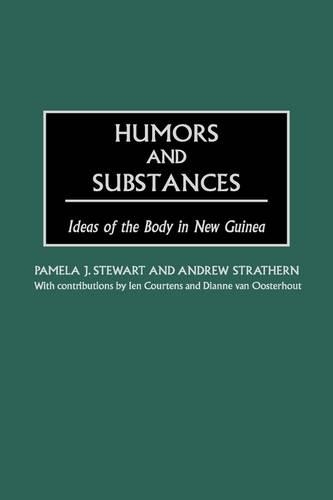
Humors and Substances: Ideas of the Body in New Guinea
(Hardback)
Publishing Details
Humors and Substances: Ideas of the Body in New Guinea
By (Author) Professor Pamela J. Stewart
By (author) Andrew Strathern
Bloomsbury Publishing PLC
Praeger Publishers Inc
30th November 2000
United States
Classifications
Tertiary Education
Non Fiction
306.4
Physical Properties
Hardback
176
Width 156mm, Height 235mm
454g
Description
This book considers in depth the emergent theme of concerns over bodily fluids in health and wellness through an examination of a rich set of ethnographic materials from the Pacific islands of New Guinea. The particular structure of the book draws together otherwise disparate observations made by ethnographers on ideas of the body. It helps to reveal how these are related to ideas of sickness and curing, of witchcraft, of cannibalism, of gender relations, and of ecology and ritual. It facilitates cross-cultural comparisons with other parts of the world, as well as making clear the fundamental similarities between the societies of Irian Jaya and Papua New Guinea. It also discusses the idea of the cosmos and its centrality to ideological representations of the physical and social body. Society is seen to be part of the cosmos, and the human body directly linked to, and in cyclical flow with, the elements of the life-world in general, and society in particular.
Reviews
[t]his a welcome contribution to the exsisting anthropological works concerned with the body and the person in New Guinea in general; in addition, it provides new ethnographical information on the Hagen, Pangia, and Duna.-Int. Review of Anthropology and Linguistics
This clearly written work is very important. After an eighty-year lapse, anthropologists are systematically addressing cultural constructs of conception, ontogeny, foetal growth, and inheritance in relation to perceived social and physical environments. This book is a model for approaching this nexus clearly, comparatively, and transparently.-Journal of Humanities and Social Sciences of Southeast Asia and Oceania
"this a welcome contribution to the exsisting anthropological works concerned with the body and the person in New Guinea in general; in addition, it provides new ethnographical information on the Hagen, Pangia, and Duna."-Int. Review of Anthropology and Linguistics
"This clearly written work is very important. After an eighty-year lapse, anthropologists are systematically addressing cultural constructs of conception, ontogeny, foetal growth, and inheritance in relation to perceived social and physical environments. This book is a model for approaching this nexus clearly, comparatively, and transparently."-Journal of Humanities and Social Sciences of Southeast Asia and Oceania
"[t]his a welcome contribution to the exsisting anthropological works concerned with the body and the person in New Guinea in general; in addition, it provides new ethnographical information on the Hagen, Pangia, and Duna."-Int. Review of Anthropology and Linguistics
Author Bio
PAMELA J. STEWART is Research Associate, Department of Anthropology at University of Pittsburgh./e ANDREW STRATHERN is A. W. Mellon Professor of Anthropology, University of Pittsburgh./e
